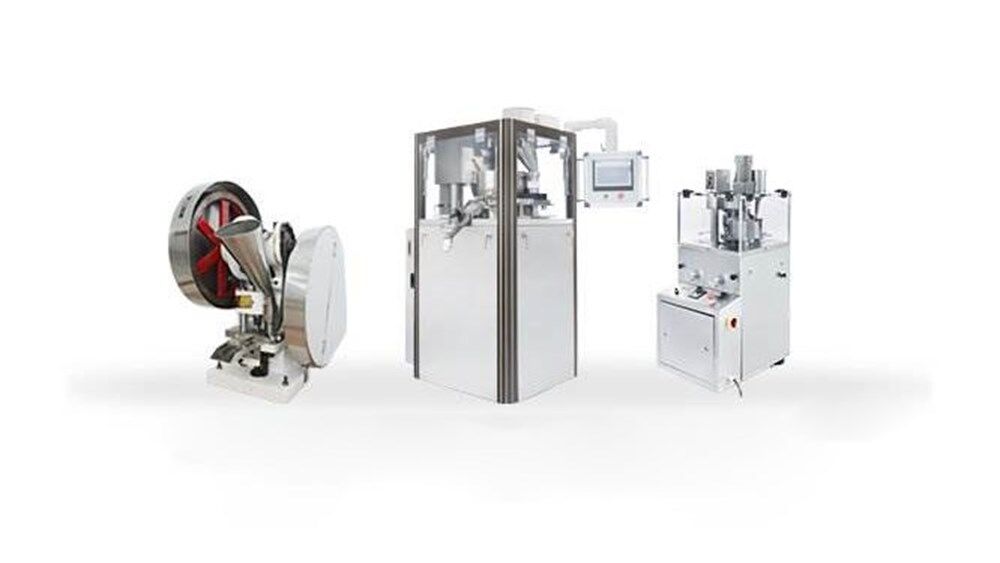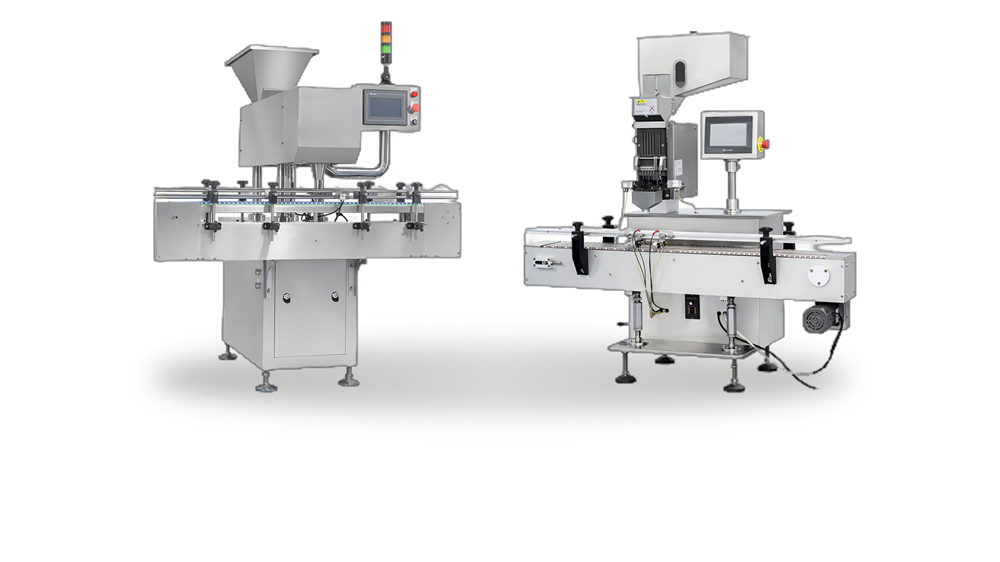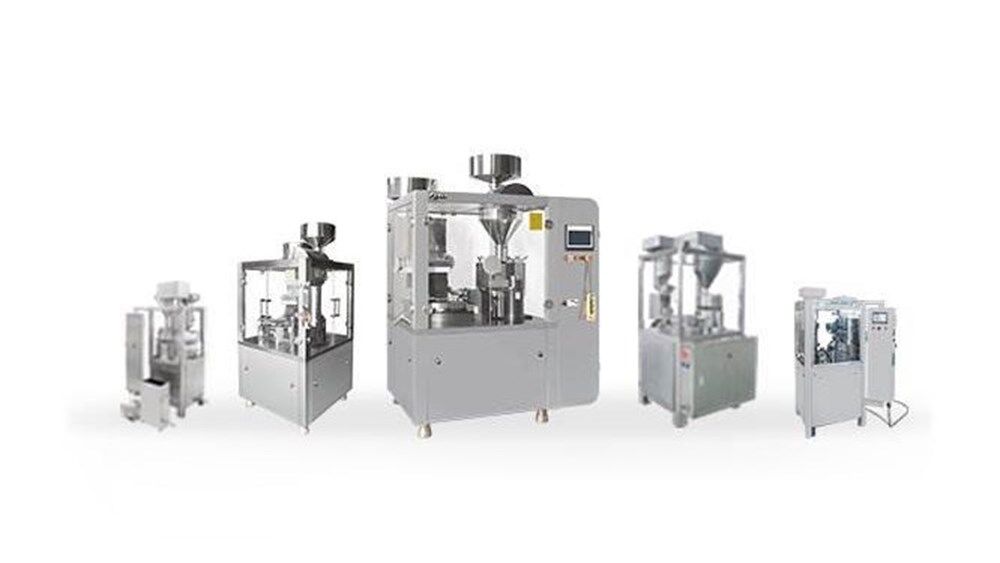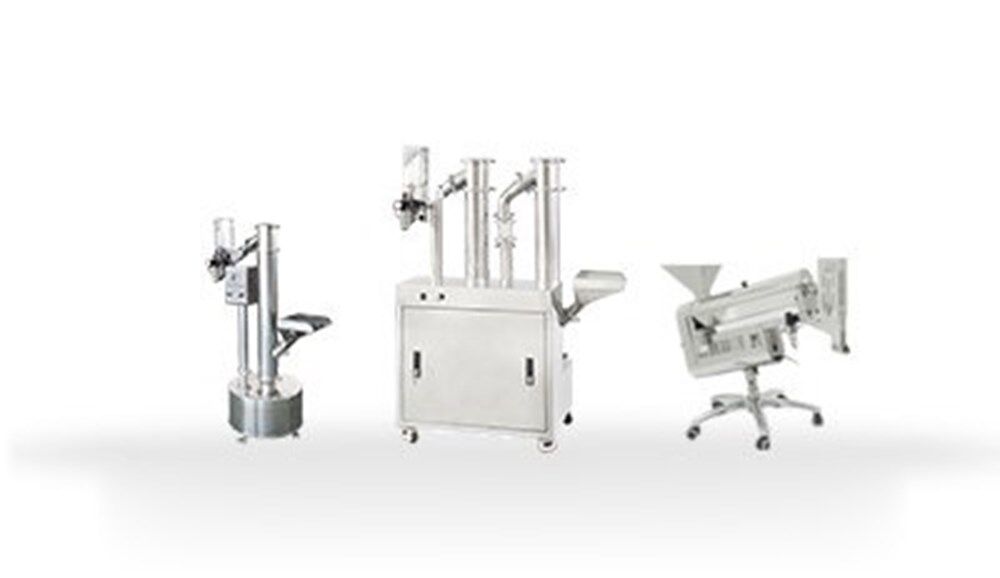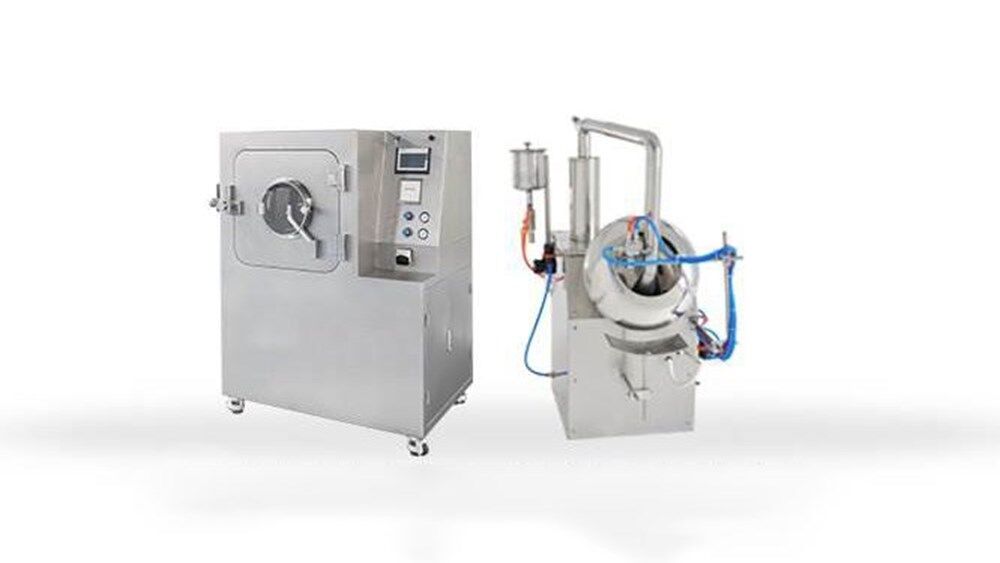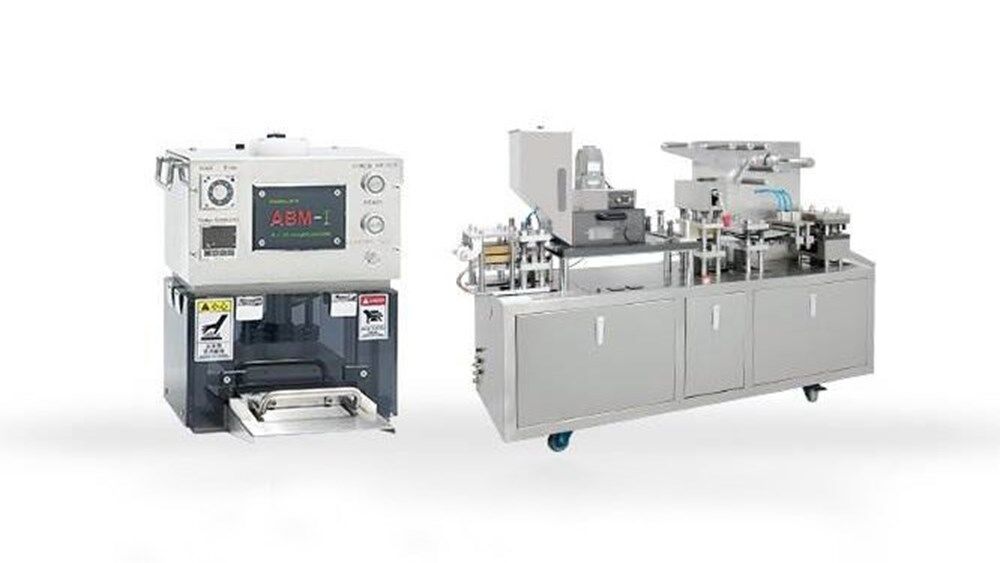Exploring the Working Principle of Powder Filling Machine
Are you dealing with powdery products? Do you want to ensure efficiency, accuracy, and consistency when packaging your powders? A quality powder filling machine can make your work easier. If you're new to the industry and considering a powder filling machine, chances are you are wondering how this machine works.
Today, we will delve deeply into the working principles of different types of powder filling machines. No matter which type of filler you choose, you will be able to operate your machine more confidently after reading.
Different Types of Powder Filling Machines
If you've ever Googled "powder filling machine," you may feel overwhelmed by the search results. There are too many styles and types to choose from. But actually, based on their workings, these machines can be classified into three major types: auger fillers, volumetric fillers, and net weight fillers—the differences among the three lie in the configurations and filling methods they use.
1. Auger Filling Machine
An auger filling machine operates by using a rotating auger screw. The auger screw is housed in the hopper or the funnel, depending on the characteristics of the product to be filled.
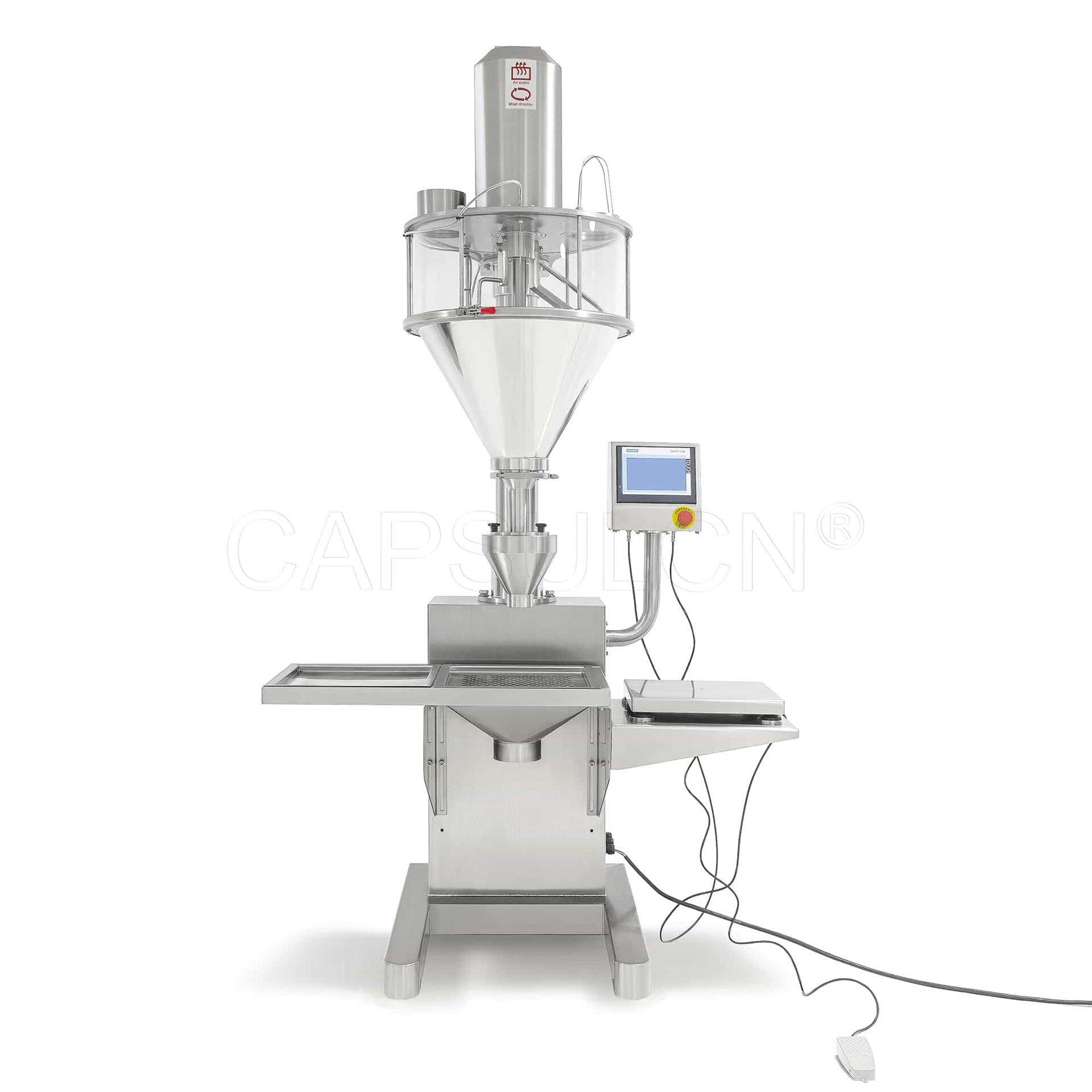
The auger filler is a popular powder filling equipment option as it's capable of handling both free-flowing and less-free-flowing powdery products. Especially if you're looking to fill fine powders, this machine is perfect for you. Additionally, its funnel comes in a range of sizes to be compatible with various containers. The downside is this type is not that gentle on products.
2. Volumetric Filler
As with auger fillers, volumetric fillers dispense powders by measuring their volume. But unlike the auger ones, they employ multiple cups to meter a precise amount of the product and fill it into a container with gravity feed.
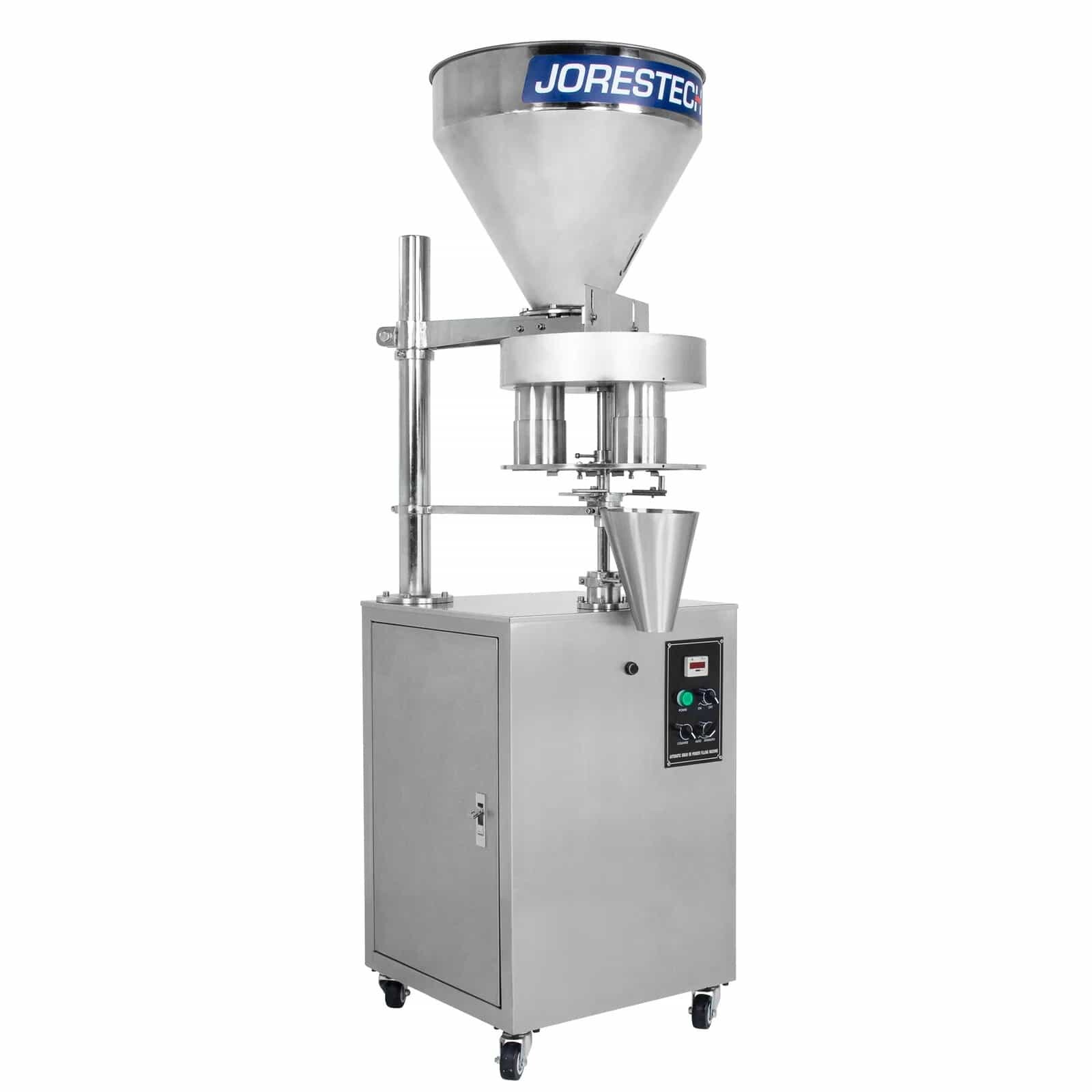
(Image Source: JORES TECHNOLOGIES)
Volumetric fillers are suitable for handling most free-flowing substances. If you want to fill non-free-flowing products, they can also do the job unless you equip an agitator. Of course, that means you have to shell out extra cash. It's worth mentioning that volumetric fillers can operate at a higher rate, making them a great option for large-scale filling operations. But, on the flip side, these machines are limited in the types of powdery products they can fill.
3. Net Weight Filler
Net weight fillers, as the name implies, perform filling operations by measuring the weight of the powdery product. They are the only powder filling equipment that weighs the product before filling it into a container. That is to say, these machines boast a weighing system as the core component. They can also automatically adjust the feed rate to ensure the fill amount reaches the target weight.
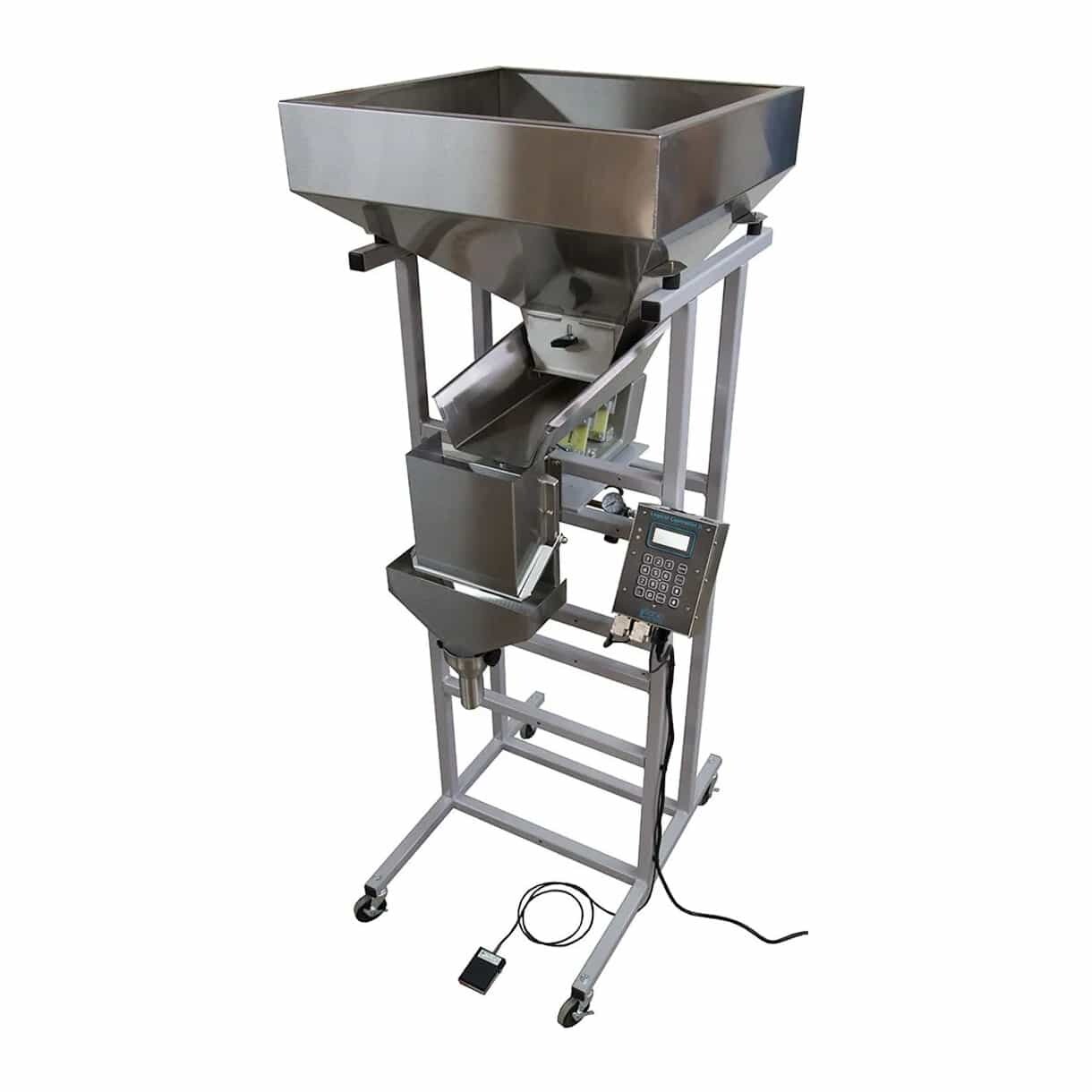
Net weight fillers are ideal for handling delicate powdery products and irregular ones. The drawback? Since these machines feature vibratory feed, they may cause a mess when dealing with very fine powders. Also, they usually run slower than the above two types.
Working Principle of Powder Filling Machine
Since you know the popular powder filling machines, let's take a closer look at how each type actually works. Here, we break down the filling process of each type of machine into several steps.
How Does An Auger Filling Machine Work?
STEP 1: Prepare the machine.
Whether it's the first use or for a new production run, clean and sanitize your auger filler according to the manufacturer's instructions. Get all filling settings ready via the machine's HMI panel, including the fill volume, fill speed, and even manual/auto options.
STEP 2: Load the product.
Check the powdery product to see if there are any oversized clumps or debris that could clog the auger screw. Pour the powders into the hopper. Note that the product level should not exceed the maximum capacity.
STEP 3: Start the machine.
Enable the mixing function. The auger starts to rotate inside the hopper. If your machine is equipped with an agitator blade, this component will rotate in the meantime but in the opposite direction with the auger. The blade breaks up large clumps to ensure a smooth product flow. Then, the auger takes advantage of its evenly-spaced flights to hold and transfer a precise amount of product down the funnel.
STEP 4: Fill the container.
Place a container under the funnel to catch the product discharged from the funnel. You can also equip your auger filler with a conveyor. This system is responsible for transferring containers to the filling position and moving filled containers to the next processing stage.
How Does A Volumetric Cup Filler Work?
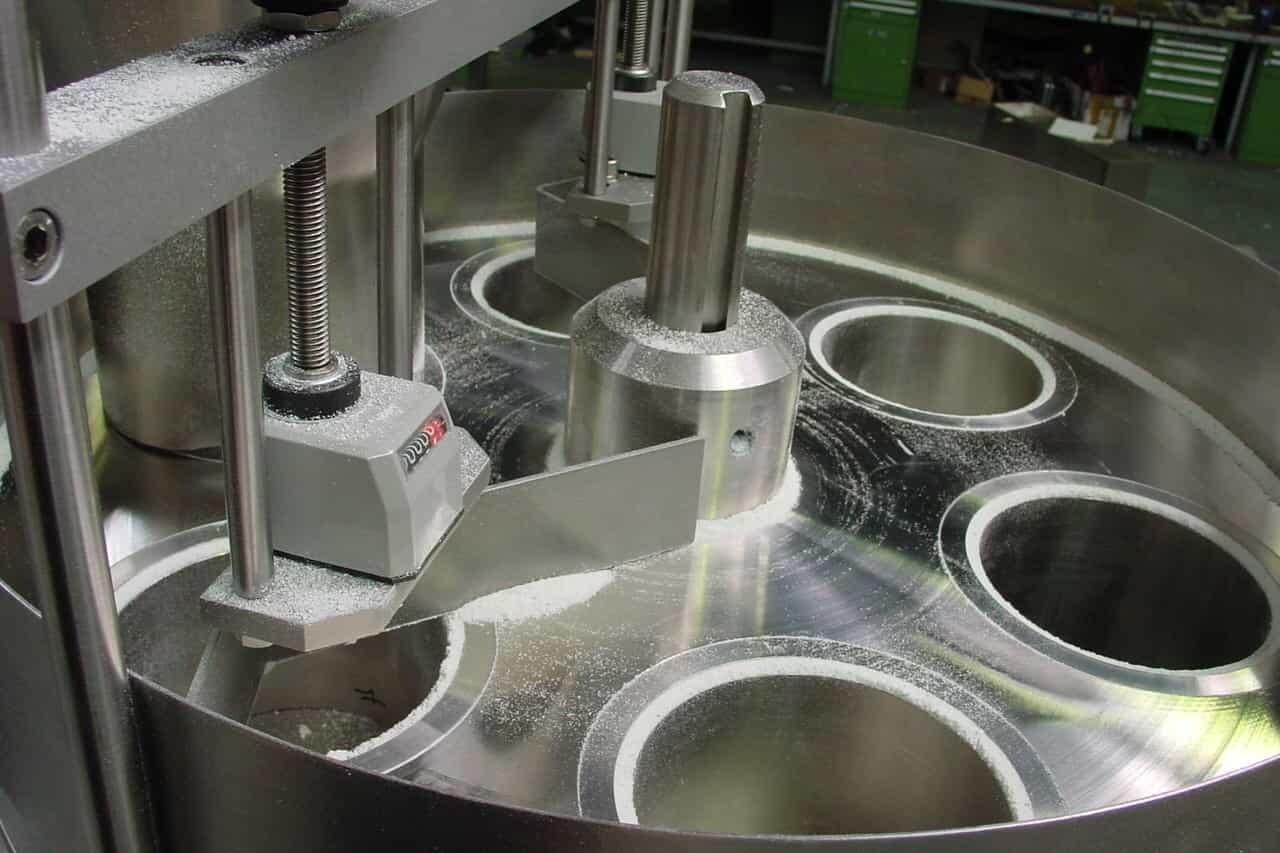
(Image Source: Propac)
STEP 1: Get all things ready.
As with the first step of auger fillers, clean all the accessible components. Remove any residue from the turntable. Set up the machine based on your production needs.
STEP 2: Load powders.
Ensure the product is free of debris or particularly large clumps. Pour the powders into the hopper. If you're handling less free-flowing products, use an agitator to ensure uniform filling.
STEP 3: Dispense products.
The volumetric filler features a turntable that consists of multiple cups or cup-shaped cavities. The cup size is exactly the fill volume. As the machine is on, the turntable starts to rotate. Those cups move to the bottom of the hopper in turn to receive the product. Once the cup is filled with the product, a scraper mounted above the turntable levels off the excess powder to ensure a consistent fill volume.
STEP 4: Fill the container.
The filled cup then aligns with the discharge point as the turntable rotates. The volume-measured product falls out of the cup and into the container below through the discharge chute.
How Does A Net Weight Filler Work?
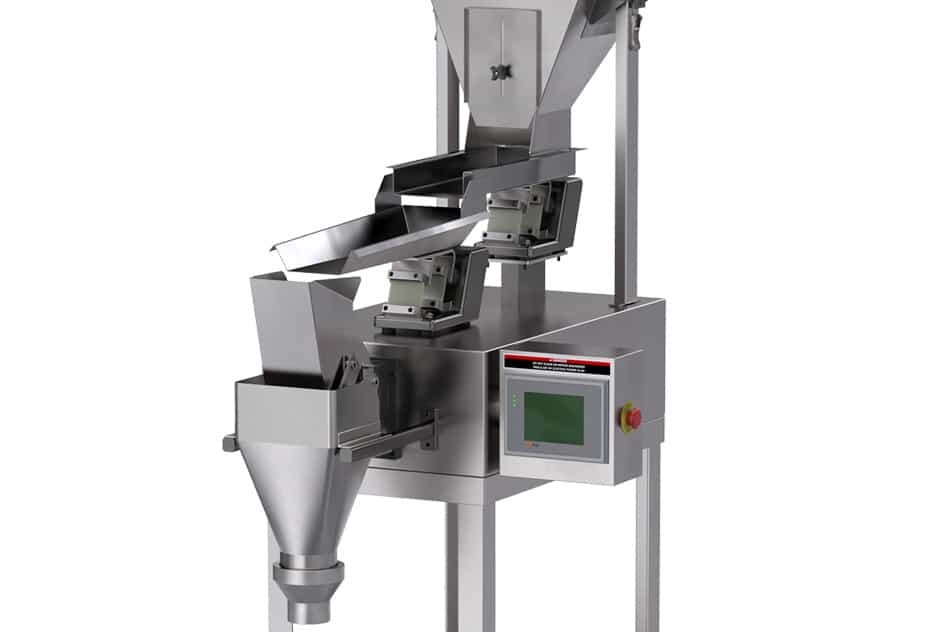
STEP 1: Have everything ready to go.
Check if all components of the machine are clean and properly assembled. Pour the product to be filled into the hopper. Set up all parameters for this production run.
STEP 2: Feed the product.
Start the net weight filler. The powders begin to flow from the hopper down to a vibratory tray. The hopper is designed with a height-adjustable feed gate to control the product flow. The vibratory tray serves as a feeder pan. This component receives a certain amount of powders flowing out of the hopper. Then, it feeds them into the weigh bucket in a vibratory motion.
STEP 3: Weigh the product.
The powders stream directly into the weigh bucket by gravity. The weigh bucket is mounted onto a load cell to measure the weight of the product falling in it. Meanwhile, real-time feedback is provided to the machine, allowing the operator to monitor the filling process.
STEP 4: Adjust the feed rate.
As the fill weight in the bucket is close to the target weight, the vibratory feed system will automatically adjust to a "dribble" feed rate. This slower feed rate helps prevent overfilling, ensuring precise weight measurement.
STEP 5: Pause feeding.
Once the target weight is reached, the vibratory feeder pan will pause. This prevents powders in the feeder pan from falling into the weigh bucket by accident. Now, the product in the weigh bucket is ready for discharge.
STEP 6: Fill the container.
There is a trap door mounted at the bottom of the weigh bucket. When it's time to discharge the product, the trap door opens, allowing the product to fall through the discharge funnel into the bottle or pouch below.
Conclusion
As you can see, the working principle of powder filling machine is indeed simple. However, understanding how different types operate really helps when you decide to invest in a new machine. With relentless advancements in technology, we can expect even more innovative features to enhance the performance of these powder filling machines in the future, such as advanced automation, digital solutions, and flexible customization.
Leave your comment
Also Offers
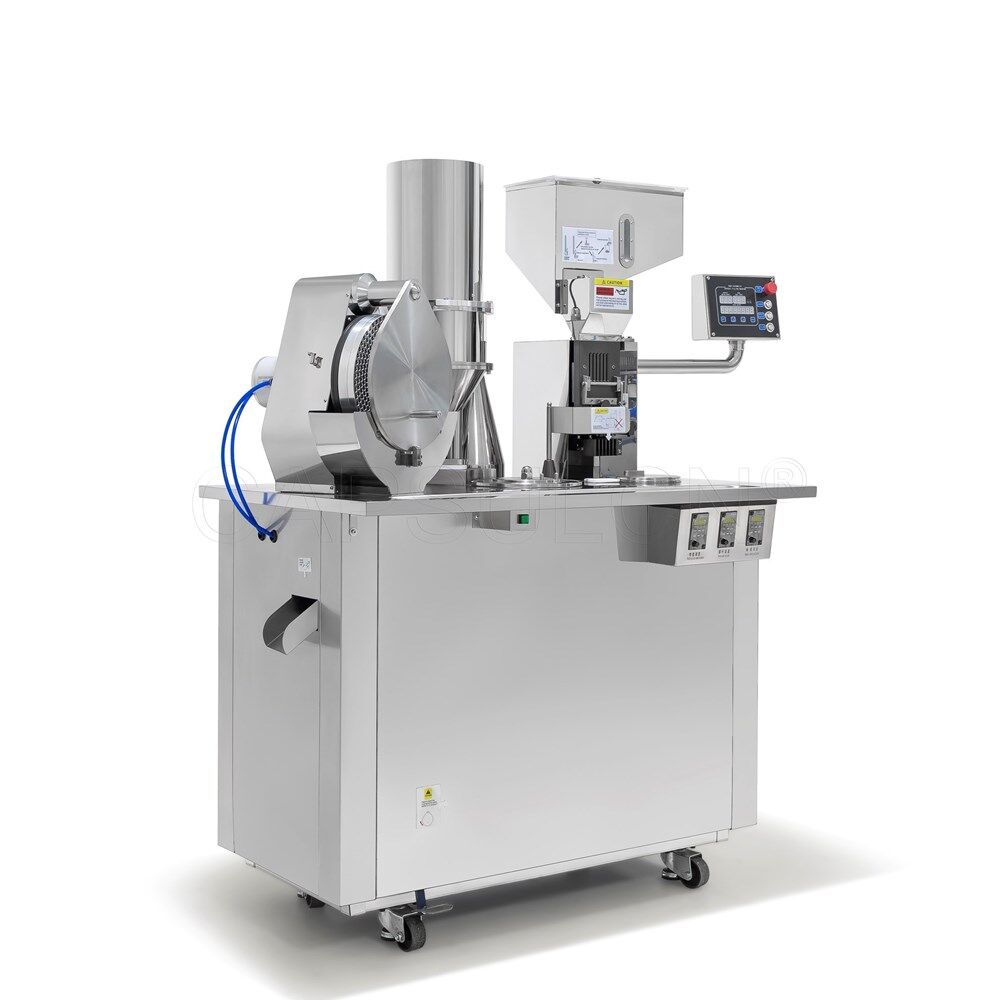
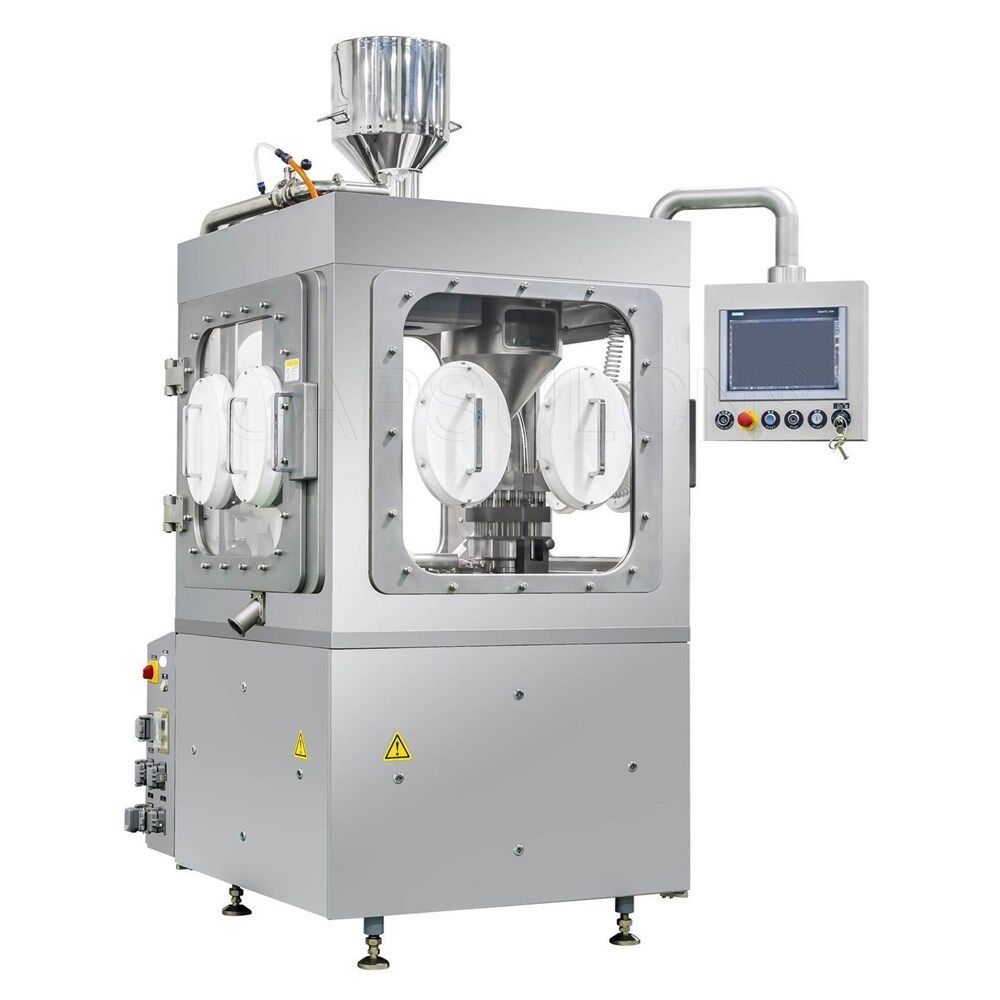
Containment Automatic Capsule Filling Machine SFK-703
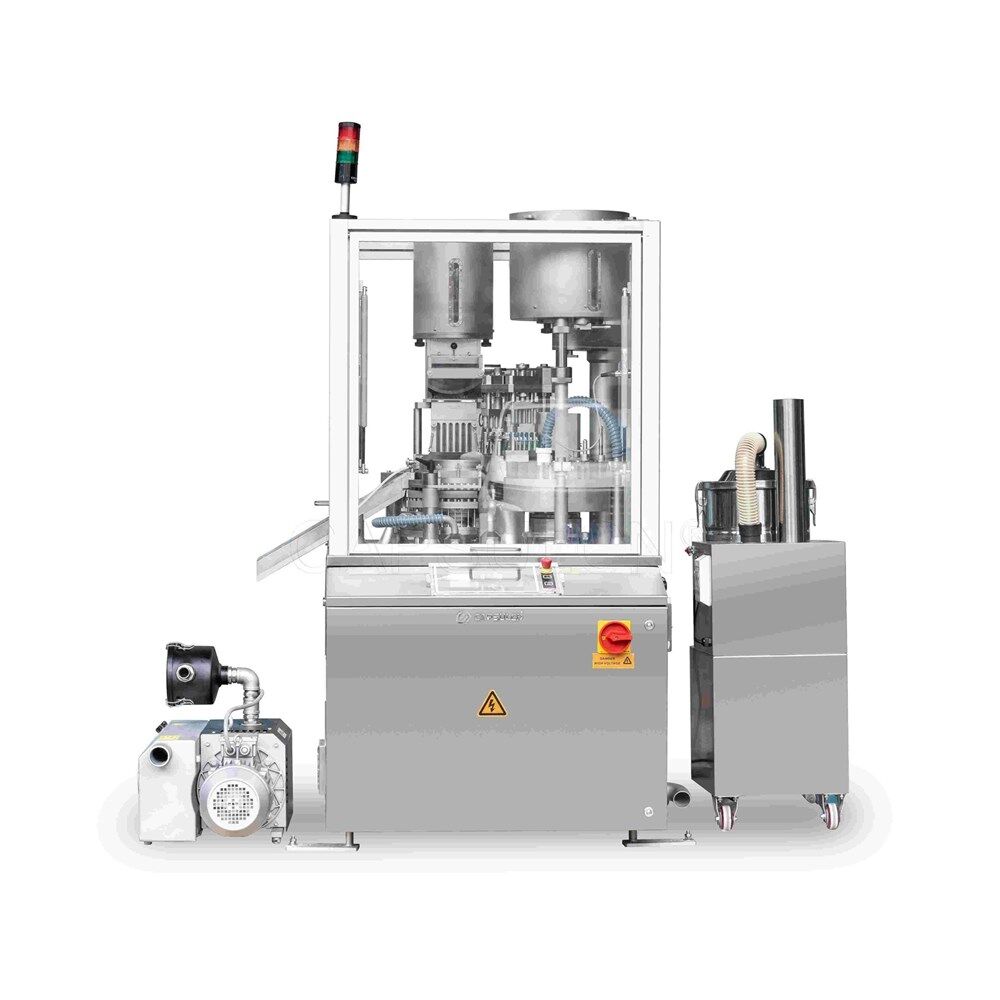
Fully Automatic Dosator Capsule Filling Machine CZ-40

Our Team
As an expert in the pharmaceutical and pharmaceutical packaging industry, iPharMachine has provided solutions for hundreds of pharmaceutical and health product manufacturers for 17 years. By visiting customers, we get good reviews from our customers.
- info@ipharmachine.com
- English Español Deutsche
